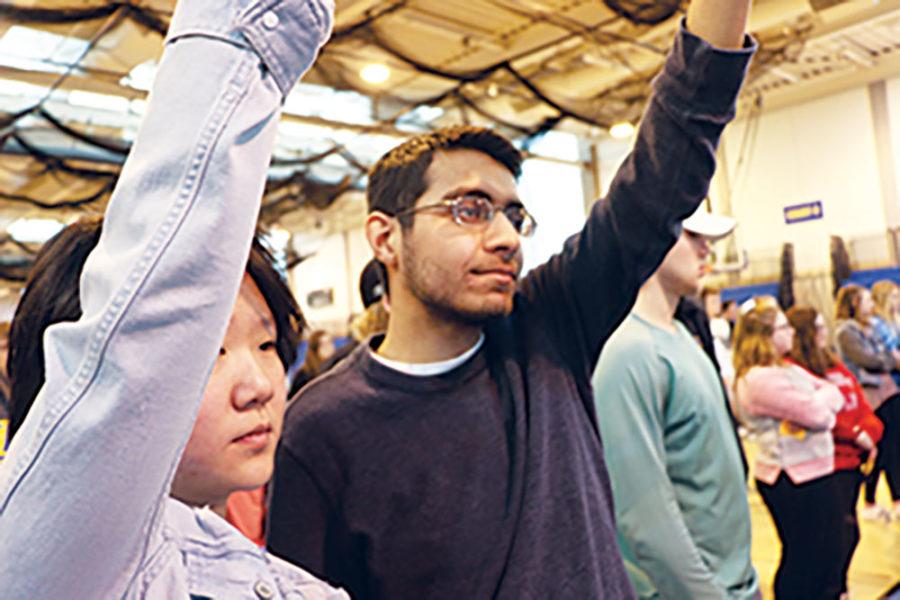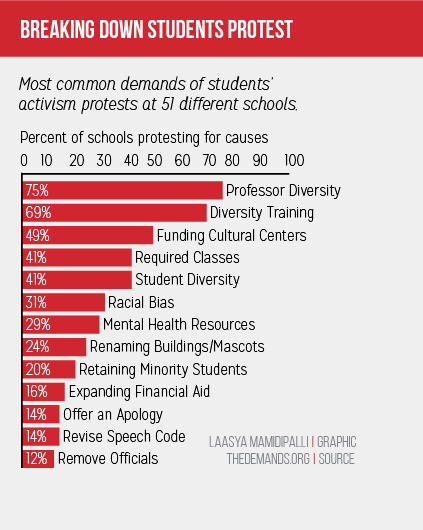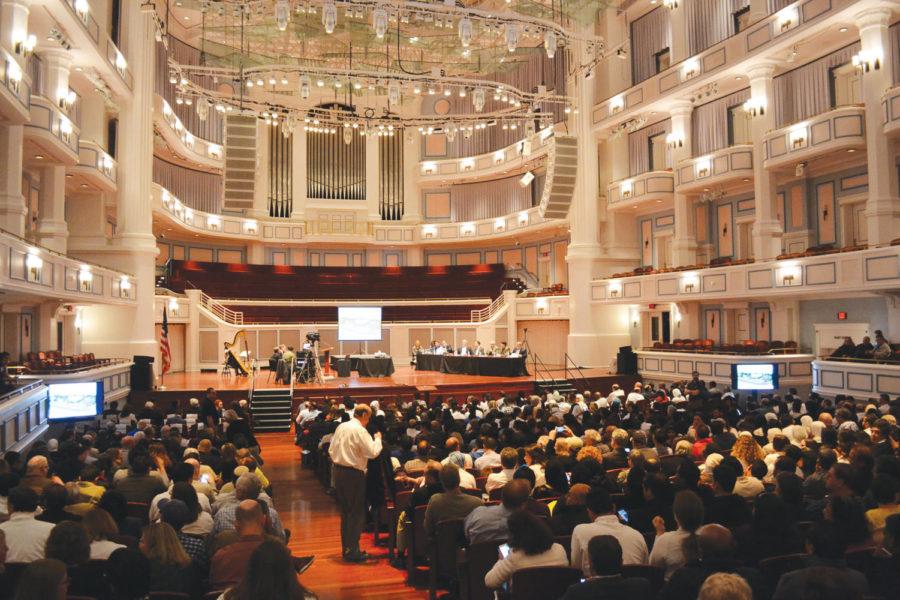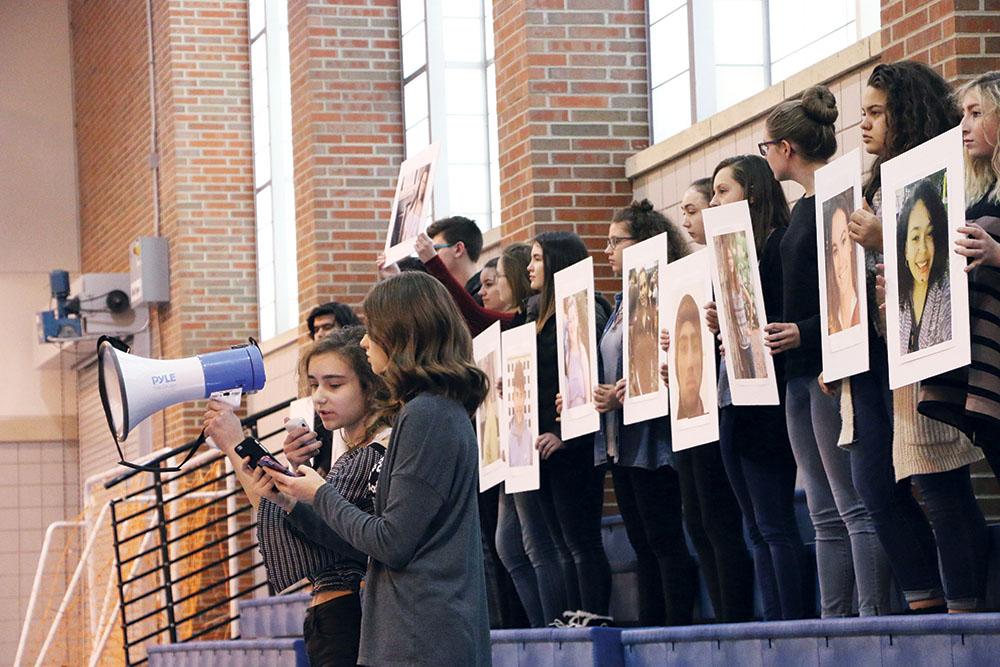Your donation will support the student journalists of Carmel High School - IN. Your contribution will allow us to purchase equipment and cover our annual website hosting costs.
Build of Rights: Students, experts reflect on youth engagement in local government
March 23, 2018

STANDING UP FOR RIGHTS:
Seniors Talha Ahmad and Catherine Yuan hold up a sign at the March 14 school walkout. Both spoke at the BZA meeting supporting the mosque.
Right before the start of the second Board of Zoning Appeals (BZA) public meeting for Al Salam Foundation’s mosque proposal for Carmel on Feb. 26 at 5:04 p.m., CHS students handed out blue ribbons and rehearsed their one-minute tailored speeches they planned to give that evening. Senior Talha Ahmad said he, too, prepared ahead, spending weeks coordinating with his club, Amnesty International, as well as CHS Democrats and Action Together to contact City Council. The meeting ended close to midnight, and the BZA granted its final decision: it approved the project.
What surprised Ahmad about the process—and is out of the ordinary for Carmel, he said—was a noticeably heightened level of activism from students the past two months.
“I wanted this to be a fun way for people to get civically engaged because youth are notorious for being apathetic and disengaged, even though we are the strongest force for change,” he said.
Other youth may have that same idea. In recent months, students around the country have gained attention as they work to affect change. For example, tomorrow marks the first ever March for Our Lives, where, as its website states, “Kids and families will take to the streets (across the country) to demand that their lives and safety become a priority.” It’s the manifestation of national student activism, inspired by Marjory Stoneman Douglas High School students, who, since the mass shooting on Feb. 14, spurred youth to actively participate in the democratic process.
In terms of the mosque’s process, BZA member Leo Dierckman said he enthusiastically supported the students’ proactive attitude.
“One of the things we have some leeway, some understanding ability to make interpretation on, is the impact on the community that these various projects (have). So, it was beneficial to hear the students talk about the importance of the mosque not only for themselves in some instances, but also for their friends or the school,” Dierckman said.
Government teacher Joshua Miller said the country carries an apathetic attitude towards voting. But, he said, youth engagement has proved effective and foreshadows a positive future.
“It’s remarkable; if you vote in that first election (you’re eligible for), the likelihood of you being a lifelong voter increases incredibly,” Miller said. “Right now, you have a group of youngsters that are ready to engage in this process.”
Movements led by youth are not uncommon in U.S. history and world history. For example, the Children’s Crusade of 1963 started in Birmingham, Ala., was a landmark in the Civil Rights movement, according to the Daily Beast. Miller said in the Middle East, as evidenced by social media usage in the Iranian Green Revolution, youth participation also defines modern history.
“Eventually people have to listen to youth,” Miller said. “This is the ultimate thing: you see the detractors from some of the youth are saying, ‘Well, they’re just children,’ but eventually, those are our leaders. They’re the future, and we always hear that cliché, but they’re the future, and when they care deeply about something people better listen because they are likely voters (in the future). When you can get that engagement at that age, you’re building a pretty good civil society.”
Agreeing with Miller, Dierckman and the other four BZA members, said they were encouraged by Carmel’s display of youth articulating their views, emphasizing the power young voices have.
According to Ahmad, he said this whole process was a positive one.
Ahmad said, “Just learning about how the Carmel local government operates was eye-opening to how much potential there is for positive change. Getting the youth involved is important to me because it’s the group I’m a part of and most familiar with. 2017’s word of the year was ‘youthquake,’ which really emphasizes how essential we are to evoking change in the system.”

STANDING UP FOR RIGHTS:
Carmel residents attend BZA meeting on Feb. 26. BZA member Leo Dierckman said they heard students’ view on the mosque issue.
